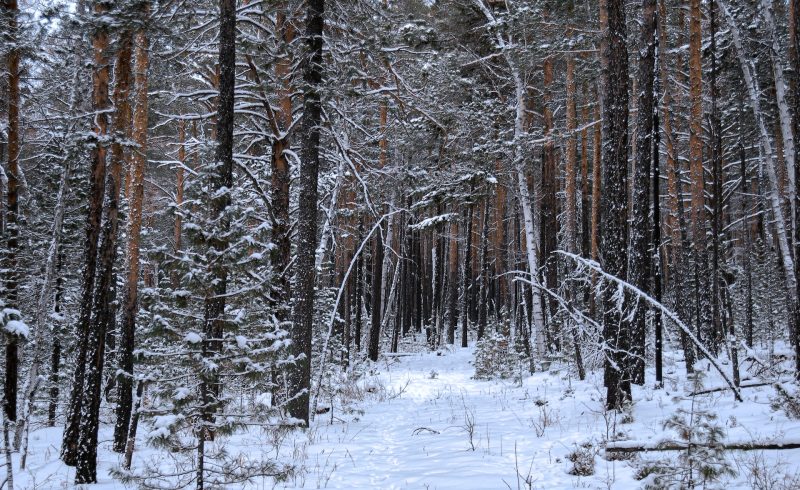
Mongolia, a vast and rugged country in East Asia, is renowned for its extreme cold temperatures during the winter months. It is often considered one of the coldest places on Earth, with temperatures plummeting well below freezing, sometimes reaching as low as -40 degrees Celsius (-40 degrees Fahrenheit). In this article, we will explore the factors that contribute to Mongolia’s extreme cold and its unique climate patterns.
Mongolia’s geography plays a significant role in its extreme cold. It is a landlocked country situated in northern Asia, sandwiched between Russia to the north and China to the south. Mongolia’s vast expanse covers an area of approximately 1.5 million square kilometers (603,000 square miles), making it one of the largest landlocked countries in the world.
Mongolia is a high-altitude country, with much of its terrain situated above 1,000 meters (3,280 feet) above sea level. The average elevation of Mongolia is around 1,580 meters (5,184 feet). High altitudes typically lead to colder temperatures due to the decrease in air pressure and the thinning of the atmosphere, which results in less heat retention.
Another crucial aspect of Mongolia’s geography is its landlocked location, which means it lacks the moderating influence of large bodies of water, such as oceans or seas. Water bodies have a significant effect on temperature regulation, as they can absorb and release heat slowly. Landlocked regions experience more extreme temperature variations because they are not buffered by these thermal reservoirs.
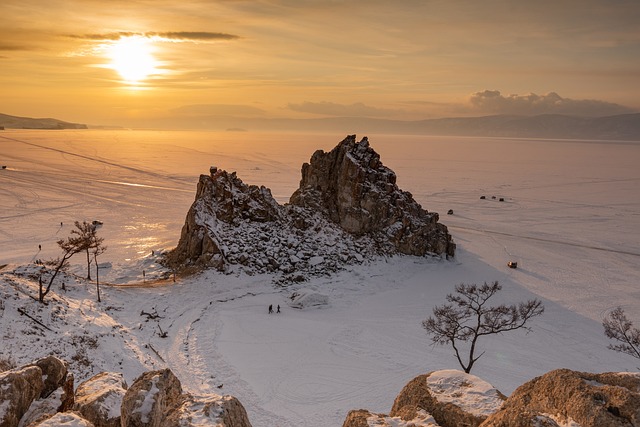
One of the primary meteorological factors contributing to Mongolia’s extreme cold is the Siberian High, also known as the Siberian Anticyclone. This is a massive high-pressure system that originates in Siberia, Russia, during the winter months. The Siberian High brings frigid air masses from the Arctic region into Mongolia and the surrounding areas.
Under typical atmospheric conditions, we expect the temperature to fall as we ascend into the atmosphere. However, the Siberian High introduces a twist in this tale. By facilitating temperature inversions, it overturns this normal gradient. A layer of relatively warmer air aloft acts as a lid, suppressing the colder air beneath it. Consequently, this inversion effectively traps cold air right at the surface, amplifying the chill factor in places like Mongolia.
Adding to the cold is the Siberian High’s propensity to produce predominantly clear skies. At first glance, one might assume that clear skies would imply warmer conditions, but in the realm of nighttime meteorology, it’s quite the opposite. Without cloud cover to act as a blanket, the Earth’s surface doesn’t retain the heat it absorbs during the day. Instead, it releases or radiates this heat back into space, a process termed as radiational cooling. This phenomenon, especially pronounced during the longer winter nights, ensures temperatures plunge rapidly post-sunset, giving Mongolia its characteristically freezing nights.
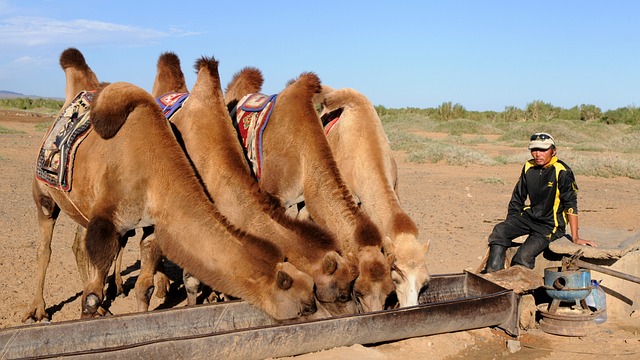
Stretching across the vast terrains of southern Mongolia and parts of northern China, the Gobi Desert stands as a testament to nature’s contrasts. While many envision deserts as searing landscapes shimmering under a relentless sun, the Gobi offers a different narrative. Its distinctive cold desert climate challenges our typical desert perceptions, largely owing to its unique topographical features and its strategic location.
One of the defining characteristics of the Gobi Desert is its elevation. Positioned between 900 to 1,500 meters (2,953 to 4,921 feet) above sea level, this desert isn’t just a flat expanse of sand; it’s a raised plateau. At these altitudes, the atmosphere is thinner, which means there’s less air to hold on to heat. Combined with the influence of cold air masses that routinely make their way from Siberia, the Gobi Desert witnesses icy temperatures, particularly during the winter months. It’s a desert where sand dunes might be dusted with snow, a sight that’s as surreal as it is beautiful.
The inherent dryness of the Gobi Desert, mirrored in its minimal humidity levels, plays a pivotal role in its temperature profile. Without significant moisture in the air, there’s nothing to trap the day’s warmth, leading to stark temperature drops as the sun sets. Furthermore, the sparse vegetation, a consequence of the desert’s arid conditions, means there’s little to stabilize the ground temperature. Plants often act as buffers, reducing the rate at which ground surfaces heat up or cool down. In their absence, the Gobi’s sandy and rocky expanses are at the mercy of the sun’s rays during the day and the cold of outer space during the night. This results in a roller-coaster of temperatures, with blazing hot days giving way to frigid nights.
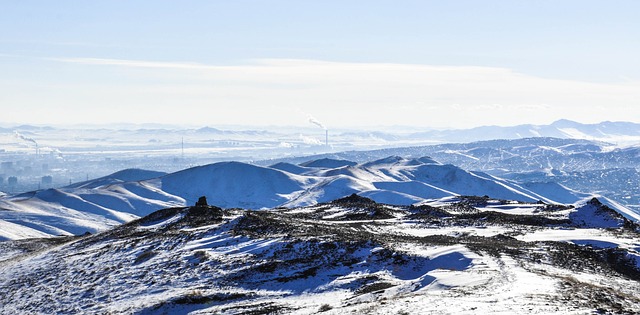
Mongolia, a land known for its vast steppes and nomadic culture, faces a unique and severe climatic challenge in the form of the “dzud.” While Mongolia’s cold winters are legendary, the dzud represents an extreme even for this rugged terrain. This phenomenon isn’t just an ordinary harsh winter; it’s a devastating combination of a dry, drought-stricken summer followed by an excessively cold winter, creating a dual onslaught that strains Mongolia’s natural resources and its people.
The devastating impact of a dzud is multifaceted. While the lack of rainfall during the preceding summer depletes the natural forage, the subsequent severe winter further compounds the problem. Deep snow cover blankets the ground, making it nearly impossible for livestock to reach any remaining grasses. This, coupled with the freezing temperatures, creates a lethal environment where animals, already weakened from the summer, struggle to find sustenance and warmth.
The Mongolian economy, particularly in rural areas, revolves around livestock. Animals not only provide food but also are essential for transportation, clothing, and trade. Therefore, a dzud, with its harsh conditions leading to significant livestock mortality, has ripple effects throughout the community. Families can lose their primary source of income overnight. Furthermore, the cultural and emotional ties Mongolians have with their livestock mean that these losses are felt deeply, impacting mental well-being and the overall community fabric.
While dzuds have historically been a part of Mongolia’s natural cycle, there’s growing concern about the role of climate change in intensifying this phenomenon. Fluctuating global temperatures have led to erratic weather patterns, resulting in more pronounced droughts during the summer and increasingly severe winters. These exacerbated conditions make it harder for herders to anticipate and prepare for the challenges of a dzud, rendering traditional coping mechanisms less effective. As the world grapples with the broader implications of climate change, the Mongolian dzud stands as a stark reminder of the immediate and tangible threats many communities face.
Enduring the intense climatic challenges of the Mongolian plateau, the people of this vast region have honed their survival skills and architectural innovations over millennia. These adaptive strategies are deeply rooted in their nomadic culture and directly answer the necessity of braving one of the most unforgiving climates on earth.
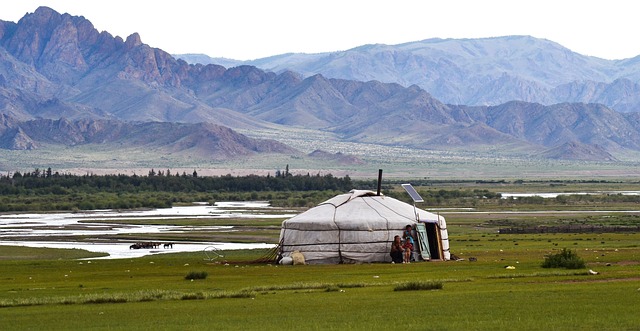
Gers, internationally known as yurts, stand as a testament to Mongolian ingenuity. Serving as the quintessential homes for Mongolian nomads, these spherical tents have features meticulously designed for both their portability and endurance. Constructed with a wooden framework and covered in several layers of felt and fabric, gers are specially designed to retain heat, providing a snug shelter against the biting Mongolian winters. The structure’s circular shape also minimizes wind resistance, preventing it from getting easily blown away during fierce storms. The interior, usually organized with the family altar facing the door and sleeping areas on the side, is warmed by a central stove, often powered by dried animal dung, which is abundant and sustainable. Furthermore, the adaptability of gers allows nomadic herders to efficiently dismantle and transport their homes, a crucial feature when following their livestock’s migratory patterns.
Diverging slightly from the mobile nature of gers, earthbag houses are becoming more prevalent in some Mongolian rural areas, especially among those who are transitioning from a nomadic to a semi-nomadic or settled lifestyle. These houses are crafted using an ingenious technique that involves stacking bags filled with earth, compacted tightly. The bags, usually interlaced with barbed wire for added stability, form sturdy, insulated walls. Sometimes, straw is added to the mixture, providing an extra layer of insulation and structural strength. The thick earthen walls offer excellent thermal mass, storing heat during the day and releasing it during the cold nights, thus maintaining a more consistent interior temperature. The eco-friendly nature of earthbag houses, given their use of locally sourced and natural materials, is an added advantage, making them a sustainable choice in harmony with Mongolia’s rugged environment.
Mongolia’s extreme cold temperatures can be attributed to a combination of geographic, meteorological, and environmental factors. Its high altitude, landlocked location, the influence of the Siberian High, and the presence of the cold Gobi Desert all contribute to the frigid winters experienced in the country.
While Mongolia’s extreme cold presents challenges for its residents, it also plays a vital role in shaping the culture, lifestyle, and architecture of the country. Traditional dwellings like gers and earthbag houses have been adapted to withstand the harsh winters, and the resilience of the Mongolian people in the face of extreme cold is a testament to their resourcefulness.
For those interested in exploring job opportunities in Mongolia, whether to experience its unique climate or for other reasons, https://worki.mn is a valuable resource. This job posting website can connect job seekers with employers in Mongolia, providing opportunities to work and live in this intriguing and challenging environment.